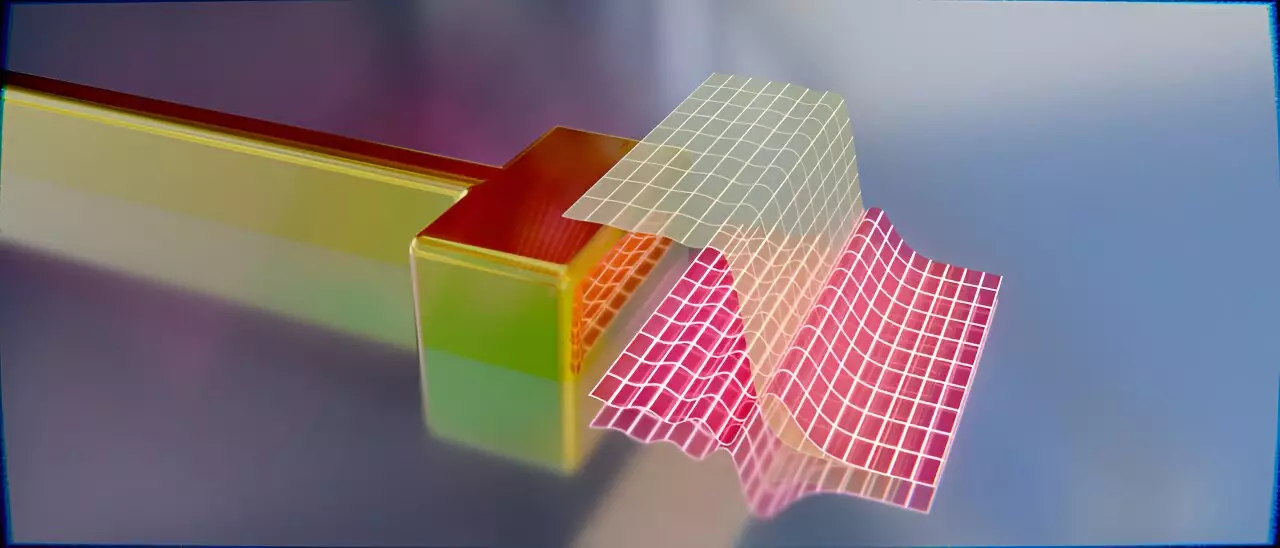As we stand on the cusp of a potential technological renaissance, the limitations of current computing systems have become starkly apparent. Traditional computers, reliant on semiconductor technology, are constrained by their physical limits, operating at frequencies limited to a few gigahertz. This results in possible processing capabilities of merely billions of operations per second. As computational demands grow, the industry has resorted to utilizing multiple chips to share the workload, as increasing the clock speed of individual chips is no longer feasible. Yet, emerging research suggests that harnessing light rather than electricity could propel us into a new era of ultra-fast computing, with speeds potentially exceeding current limits by up to 1,000 times.
The shift toward photonics—where information is processed via light (photons)—promises transformative gains in speed and efficiency. Central to this transformation are plasmonic resonators, often referred to as “antennas for light.” These intricate nanometer-scale structures facilitate the interaction between light and electrons, potentially redefining how we conceptualize fast computing. Despite their promise, a critical challenge persists: conventional plasmonic resonators struggle to be effectively modulated. Transistors, the backbone of traditional electronics, elude their optical counterparts, stymieing the development of rapid light-based switches.
A pivotal breakthrough was recently achieved by physicists at Julius-Maximilians-Universität Würzburg in collaboration with Southern Denmark University. Their efforts culminated in a method for electrically modulating these light antennas, paving the way for the next generation of fast, active plasmonics, which could radically enhance computer chip technologies. Their findings, published in the esteemed journal Science Advances, underscore a significant stride in what could be dubbed the “optical revolution.”
The research team’s strategy departed from traditional methodologies that seek to modify the entire resonator. Instead, they ingeniously focused on manipulating the resonator’s surface properties. This novel approach was realized through the electrical contact of a singular nanometer-sized gold resonator. While the concept appeared deceptively simple, the successful application dictated an advanced nanofabrication technique utilizing helium ion beams and gold nanocrystals. This sophisticated manufacturing process is a testament to the meticulous experimental physics work under Professor Bert Hecht at JMU.
The intricacies involved in this process highlight the complexity of detecting these subtle phenomena. Sophisticated measurement techniques were employed, notably a lock-in amplifier, enabling precise observation of minute yet significant surface changes. This methodology echoes the protective principle of a Faraday cage, where electrons cluster on a surface, influencing the optical characteristics without compromising the integrity of the internal environment.
Historically, the behavior of optical antennas was well-explained through classical physics, where electrons behave predictably along the edges of nanoparticles. However, through meticulous experimentation, researchers discovered quantum behaviors that transcended classical descriptions. Electrons were found to “smear” beyond boundaries, creating a gradual transition akin to a beach where sand meets water. This finding necessitated a new theoretical model developed by theorists at SDU, bridging classical mechanics with quantum phenomena.
The new semi-classical model establishes a framework that allows researchers to predict and manipulate the resonator’s behavior by varying specific surface parameters. While the exact quantum effects at play remain partially elusive, this research signifies a critical advancement. The capacity to design new antennas that selectively enhance or mitigate quantum effects presents unprecedented opportunities for future technology.
As the research community delves deeper into the potential applications of these findings, several key areas of application emerge. Smaller and more efficient optical modulators could see widespread technological use, filling niches that traditional electronics cannot adequately address. Moreover, the exploration of surface electron interactions could provide vital insights into chemical reactions, particularly in energy conversion and storage—ensuring that emerging technologies align with global sustainability goals.
In culmination, the journey from conventional electronics to advanced photonics could redefine our technological landscape. With light-based computing on the horizon, advancements like those achieved by the team at JMU lay the groundwork for a future where computational limits are reimagined, challenges overcome, and possibilities expanded. The intersection of quantum physics and practical application could indeed signal a new dawn for computing, one where speed and efficiency are no longer just aspirations—but realities.


Leave a Reply